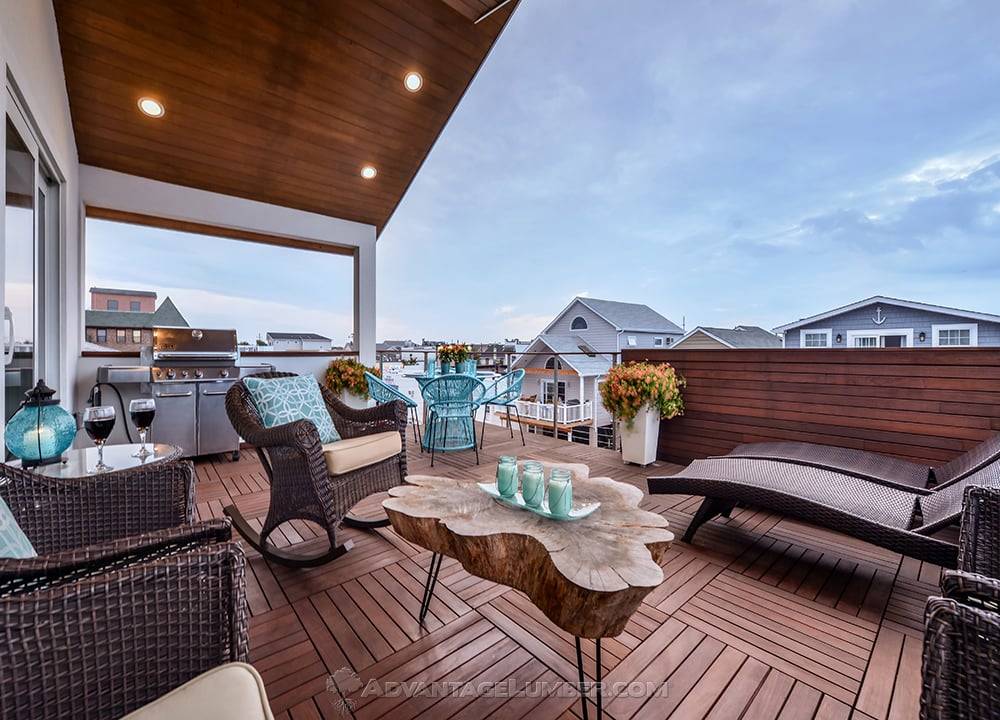Building a deck over a concrete porch or patio can be a great way to enhance the usability and aesthetics of your outdoor space. Here are some considerations, steps, and potential issues to keep in mind:
1. Advantages:
- Utilizes Existing Foundation: The concrete porch can serve as a solid foundation for your deck, reducing the need for extensive groundwork.
- Aesthetic Improvement: A wooden deck can provide a warmer, more inviting look than plain concrete.
- Increased Home Value: A well-constructed deck can increase the value and appeal of your home.
2. Considerations:
- Height: Ensure that the height of the deck does not interfere with door thresholds or windows. You’ll need enough clearance for the decking material and sleepers (the horizontal structures that support the decking and allow for airflow under the decking as well as drainage).
- Never Attach Decking Directly to Concrete: This prevents water from draining and keep the underside of the deck board constantly damp leading to cupping of the deck boards and premature failure of the decking.
- Drainage: Ensure that water can drain away from the house and does not pool under the deck. This might require adding a slight slope to the deck’s surface.
- Concrete Condition: The concrete should be in good condition, without significant cracks or unevenness. If the concrete is damaged, it might not provide a stable foundation.
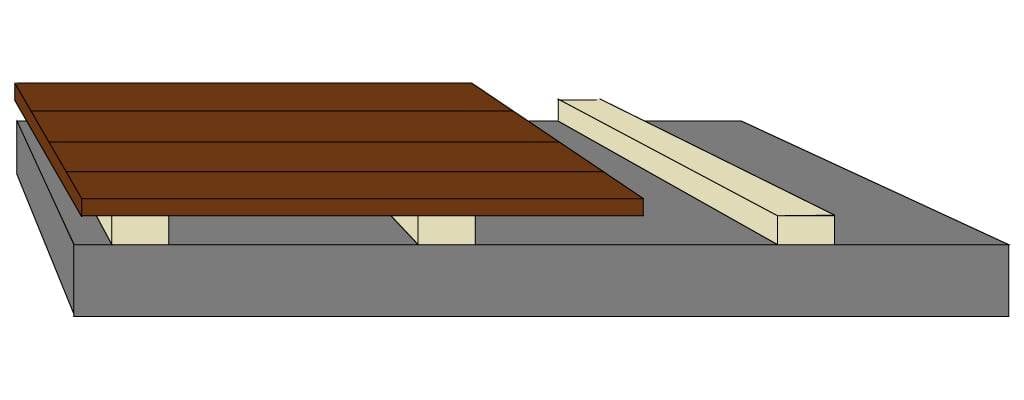
3. Steps to Build:
- Clean the Concrete: Before starting, clean the concrete porch thoroughly to remove any debris or contaminants.
- Install Sleepers: These are pressure-treated wood or metal structures that are laid directly onto the concrete. They serve as the foundation for the deck boards. Ensure they are properly anchored to the concrete, usually with masonry screws or anchors.
- Lay Decking: Once the sleepers are in place, you can install the deck boards perpendicular to the sleepers. Secure the boards using appropriate deck screws.
- Finish and Protect: Depending on the type of decking material you use, you might need to stain, seal, or paint the deck to protect it from the elements and extend its lifespan.
4. Potential Issues:
- Moisture: Trapping moisture between the concrete and the wood can lead to mold growth and wood decay. Ensure there’s adequate ventilation and consider using DeckWise Joist Tape on the underside of the sleepers before they are attached to the concrete and on top of the sleeper before the decking is attached.
- Thermal Expansion: Different materials can expand and contract at different rates. This can lead to buckling or warping if not accounted for in the design.
- Weight: Ensure the concrete porch can handle the additional weight of the deck, especially if you’re planning to add heavy furniture or a hot tub.
5. Alternatives: If you’re concerned about potential issues or the work involved in building a deck over concrete, you might consider:
- Interlocking Deck Tiles: These are easy to install and can be placed directly on the concrete. They can be removed or rearranged as needed.
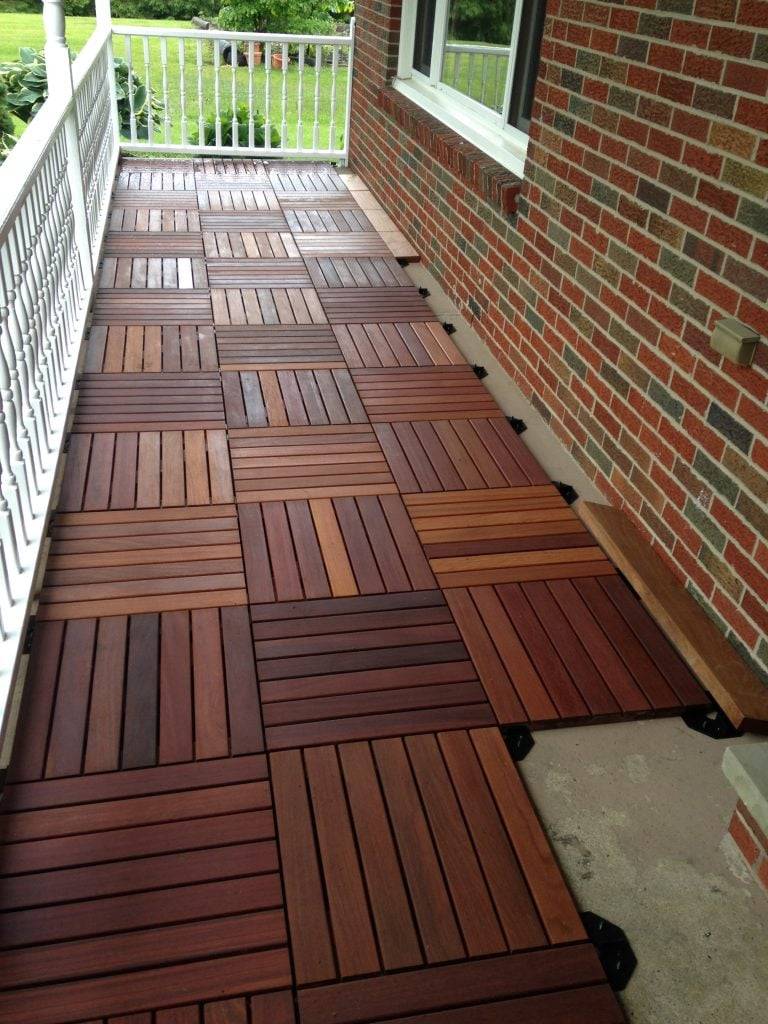
We sell a large variety of hardwood deck tiles made with some of the most durable wood species like Teak, Ipe, Cumaru, Tigerwood, Garapa and Massaranduba. They are designed to go directly over old concrete porches, patios and rooftop decks.
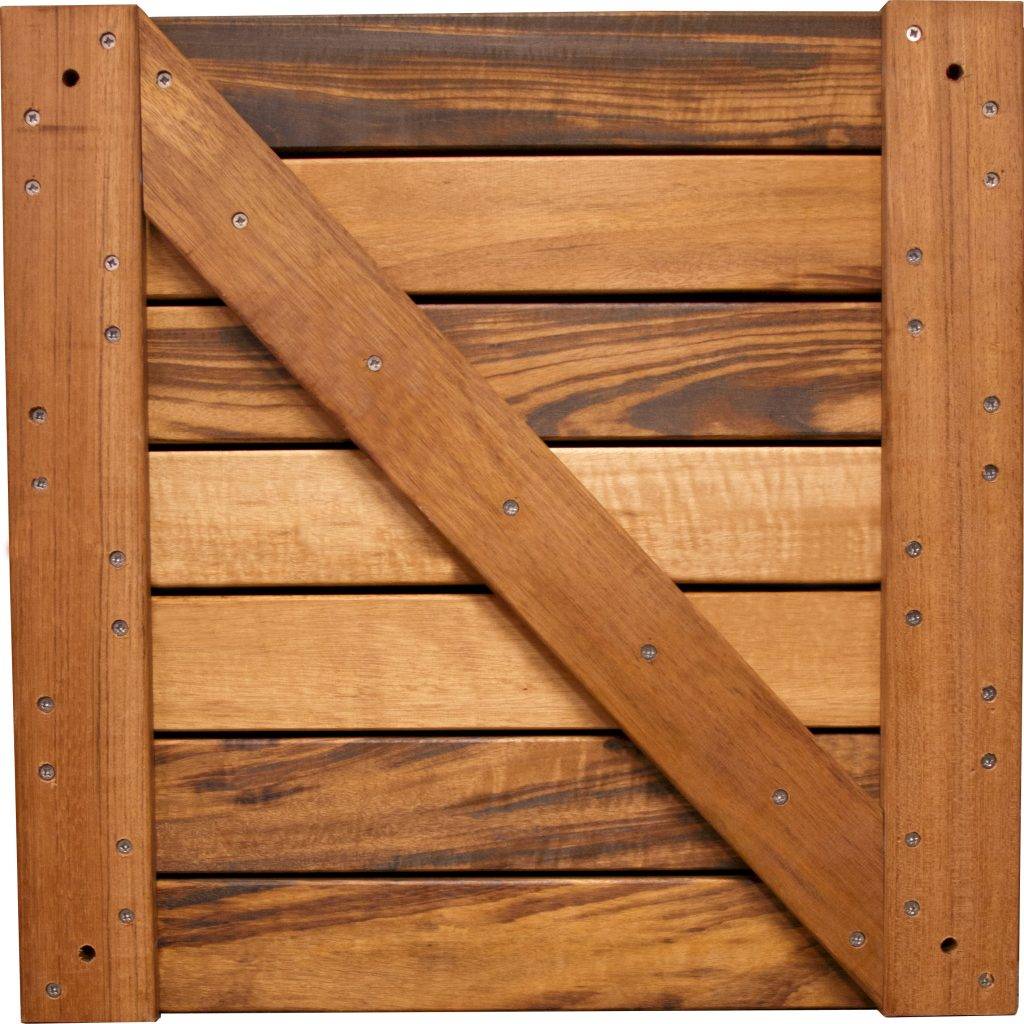
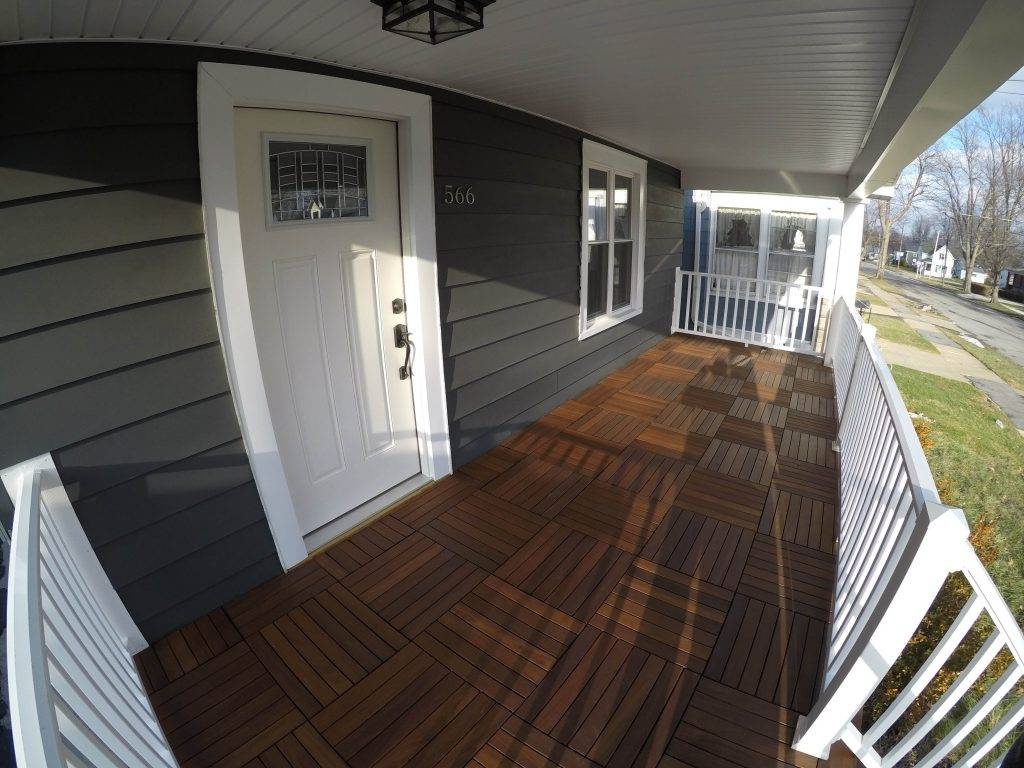

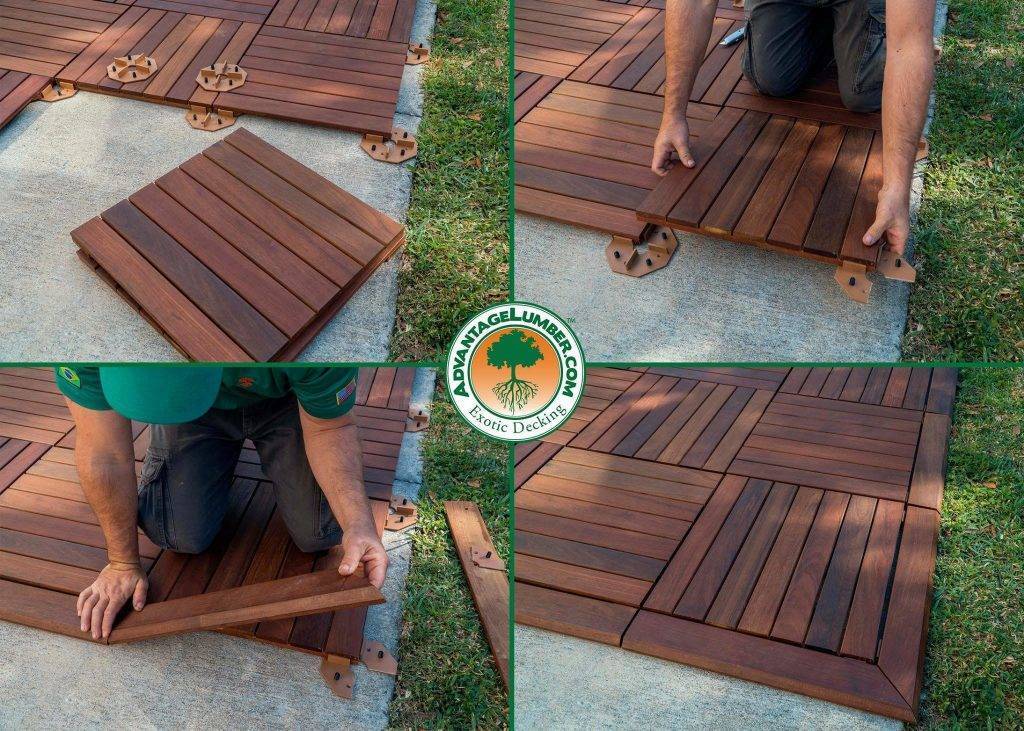
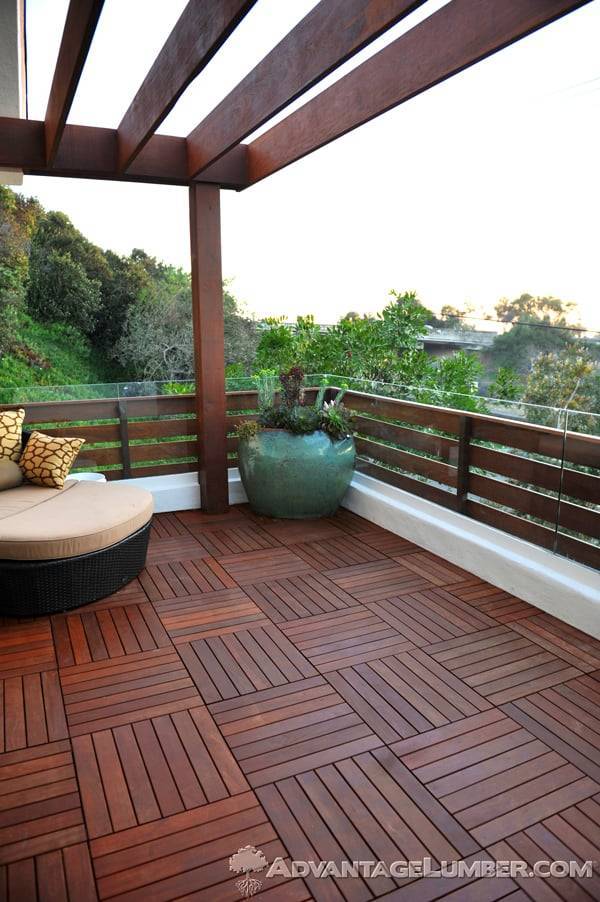
In conclusion, while building a deck over a concrete porch can be a great way to enhance your outdoor space, it’s essential to plan carefully and consider potential challenges. If you’re unsure about any aspect of the project, consulting with a professional can be a wise decision.
